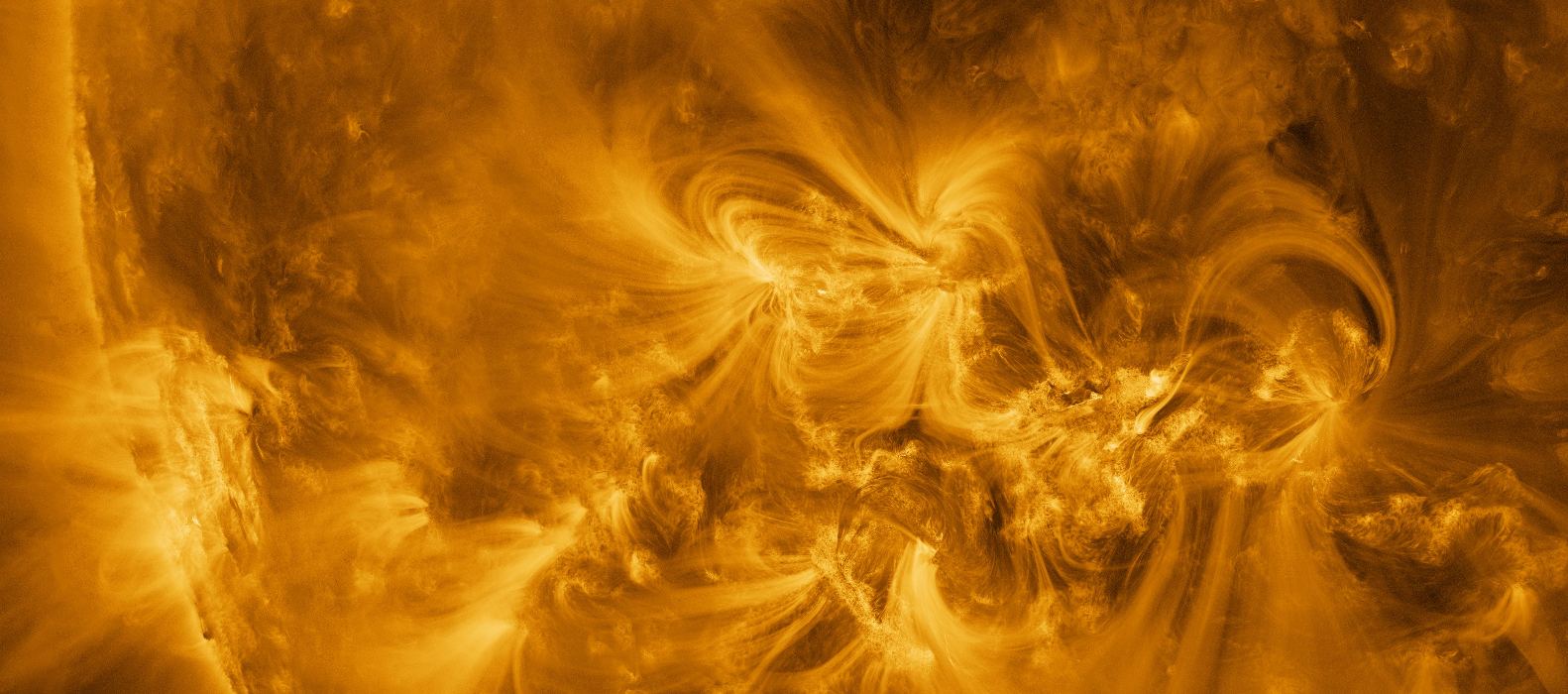74 million kilometres is a huge distance from which to observe something. But 74 million km isn’t such a big deal when the object is the Sun.
That’s how far away from the Sun the ESA/NASA Solar Orbiter was when it captured these new images.
The Solar Orbiter was launched in 2020 to investigate the Sun. It’s studying the mechanism behind the Sun’s solar wind, the complex dynamics of its magnetic field, and eruptions like solar flares and coronal mass ejections. That’s just a sampling of its science goals.
One item on the mission’s long list of objectives is high-resolution images of the Sun’s surface. For that, the spacecraft carries different imagers that operate in different wavelengths. This allows the spacecraft to almost peel back the Sun’s layers and uncover relationships between them.
The ESA has released four new images of the Sun, each one giving us a different look at our star: visible light, magnetic, plasma, and UV. These images were captured with the Polarimetric and Helioseismic Imager (PHI-German contribution) and Extreme Ultraviolet Imager (EUI-Belgian contribution) instruments in March 2023. Each image is a composite of 25 images, all captured on the same day. They’re the highest resolution images of the Sun ever taken.
According to Daniel Müller, Solar Orbiter’s Project Scientist, the Sun’s magnetic field is key to understanding the star.
“The Sun’s magnetic field is key to understanding the dynamic nature of our home star from the smallest to the largest scales. These new high-resolution maps from Solar Orbiter’s PHI instrument show the beauty of the Sun’s surface magnetic field and flows in great detail. At the same time, they are crucial for inferring the magnetic field in the Sun’s hot corona, which our EUI instrument is imaging,” Müller said.

The Solar Orbiter’s PHI instrument also gives us a map of how plasma is moving around on the Sun’s surface. Blue regions are moving toward the Orbiter, while red regions are moving away.

The ultraviolet image of the Sun from the Solar Orbiter’s EUI instrument is probably the most visually stunning. It shows what’s happening above the photosphere, where glowing plasma extends out from sunspots. The plasma is superheated and follows the same magnetic lines that encourage the sunspots.

The Solar Orbiter’s images are truly extraordinary. It’s easy to lose yourself in them, and to wonder about Life, the Universe, Nature, Evolution, How Everything Came to Be, and your own mortality in the face of it all.

Now, back to your cubicle.


